Ever wondered what fruits the world’s top chefs keep in their kitchens? Beyond the usual apples and oranges lies a world of exotic fruits that can transform ordinary dishes into culinary masterpieces.
These rare fruits offer unique flavors, textures, and colors that will surprise your taste buds and impress your dinner guests. Ready to discover nature’s hidden treasures that could take your cooking to the next level?
1. Rambutan
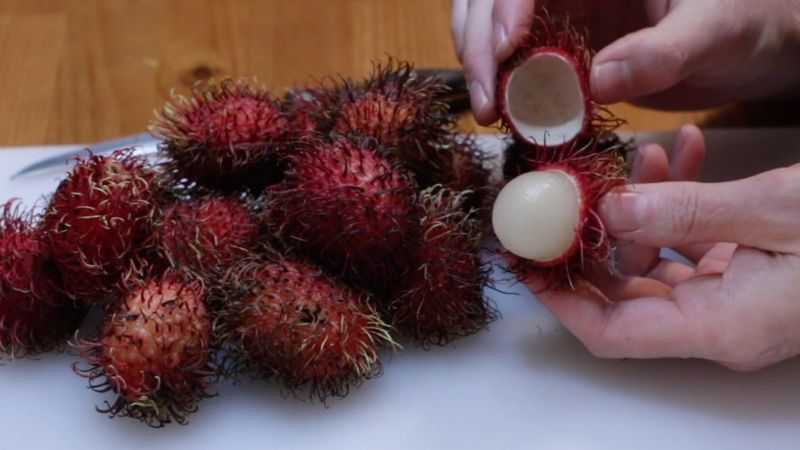
Hidden beneath a hairy, crimson exterior lies a sweet treasure that’s worth the effort to crack open. Native to Southeast Asia, rambutans resemble sea urchins but deliver a juicy, translucent flesh that’s both refreshing and exotic.
The flavor dances between sweet grape and floral lychee, making it perfect for summer fruit platters or as a conversation-starting garnish. Many first-timers are intimidated by its spiky appearance, but the shell peels away easily with a small knife cut.
Chefs love pairing rambutans with vanilla ice cream or muddling them into tropical cocktails. For the adventurous home cook, try them grilled briefly to caramelize their natural sugars – the contrast between their cool interior and warm exterior creates a memorable taste experience.
2. Lucuma
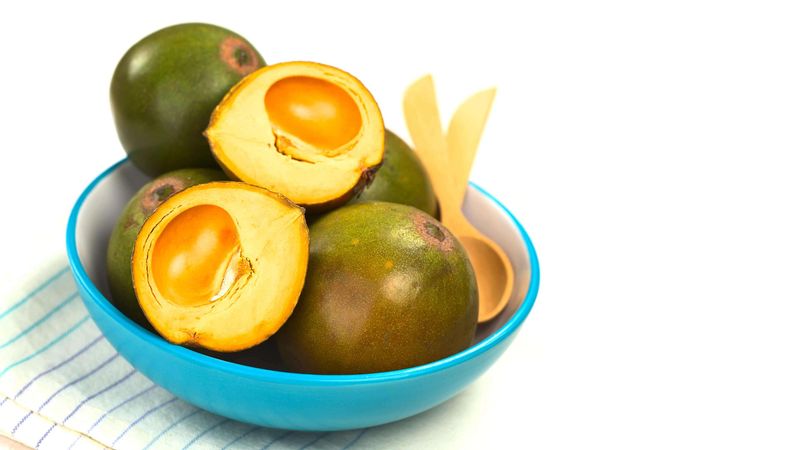
Peru’s gold of the Incas has finally made its way to international kitchens. This egg-shaped fruit with green skin hides a vibrant yellow-orange flesh that’s starchy and surprisingly dry compared to most fruits. Lucuma’s distinctive flavor profile combines maple syrup, sweet potato, and hints of caramel – nature’s ready-made dessert ingredient.
Unlike fruits that spoil quickly, lucuma is often found as a powder in specialty stores, making it accessible year-round for home bakers. Health-conscious cooks appreciate lucuma as a low-glycemic sweetener alternative. South American chefs have been using it for centuries in ice creams and custards.
For a simple introduction, blend lucuma powder into your morning smoothie or fold it into homemade whipped cream for an exotic topping.
3. Red Banana
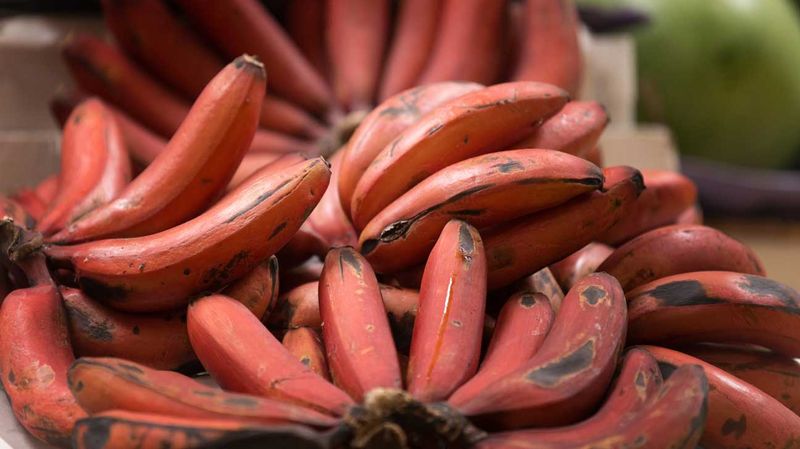
Ruby-skinned with a creamy interior, red bananas are the sophisticated cousin of the yellow varieties we’re all familiar with. These shorter, plumper fruits develop brownish-purple patches when perfectly ripe – don’t mistake them for spoilage!
What makes red bananas special is their complex flavor profile. Each bite delivers the familiar banana taste but with added notes of raspberry and vanilla that yellow bananas simply don’t have. They’re slightly softer when ripe, making them perfect for naturally sweetening breakfast dishes.
Caribbean and Central American cooks have long preferred these for their richer taste in traditional recipes. Wait until they’re very soft before using – their sweetness peaks later than yellow bananas. For an easy upgrade, substitute them in banana bread or caramelize them with brown sugar for an elevated pancake topping.
4. Chokecherry

North America’s native wild cherry has sustained indigenous communities for centuries before finding its way to modern culinary scenes. These tiny, dark berries grow in clusters and pack a flavor punch that’s both intensely tart and slightly bitter – a complexity that skilled cooks prize.
Raw chokecherries live up to their name with an astringent quality that makes your mouth pucker. But with cooking and sweetening, they transform into deep, rich syrups and preserves with an almond-like undertone from their pits. Foragers gather these berries in late summer across northern forests. Traditional preparation involves removing the pits, which contain small amounts of cyanide compounds that cooking neutralizes.
For an authentic taste of American heritage cuisine, try chokecherry syrup drizzled over game meats or whipped into a vibrant glaze for duck breast.
5. Salak (Snake Fruit)

Named for its reddish-brown scaly skin that resembles snake scales, this Indonesian treasure reveals segments of firm, apple-like flesh when cracked open. Found throughout Southeast Asian markets, salak remains virtually unknown in Western kitchens despite its delightful flavor profile.
Biting into salak delivers an unexpected combination of crisp apple texture with sweet banana and honey notes. The flesh clings to large inedible seeds, making it a fruit that requires some technique to eat gracefully. Indonesian street vendors often serve it with a simple dip of chili and sugar that enhances its natural complexity. Culinary adventurers might try pickling salak in sweet vinegar or adding it to tropical fruit salads for textural contrast.
Its firm flesh holds up well to cooking, unlike many softer exotic fruits. Store unpeeled salak at room temperature – refrigeration dulls its distinctive fragrance and honey-like sweetness.
6. Buddha’s Hand
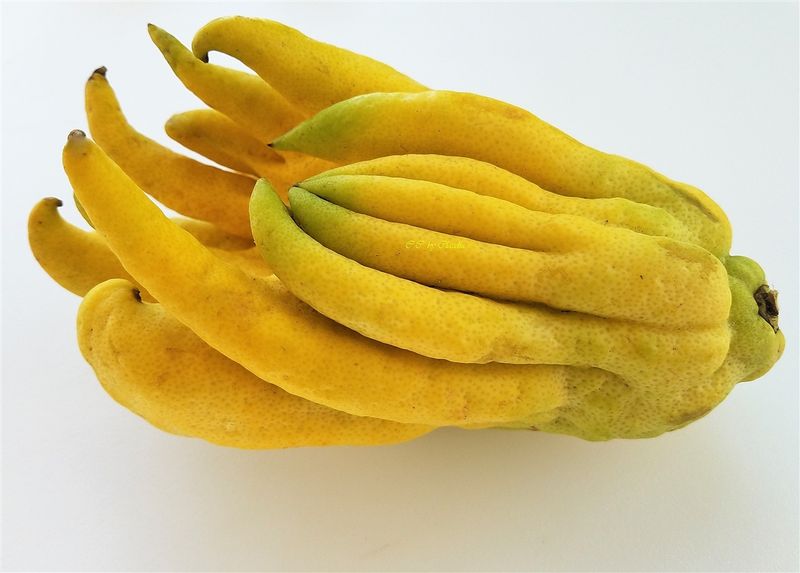
Looking more like a sea creature than a fruit, Buddha’s Hand citron splits into tentacle-like fingers that curl dramatically in all directions. Unlike traditional citrus, this aromatic oddity contains no juice or pulp – it’s all about the intensely fragrant zest.
Ancient Chinese and Japanese cultures prized Buddha’s Hand as a temple offering and natural air freshener before its culinary potential was fully realized. The yellow fingers contain a sweet, floral citrus oil without the bitterness common in other citrus peels. A single fruit can perfume an entire room with its clean, lemon-meets-lavender scent.
Creative bartenders infuse spirits with Buddha’s Hand to create complex cocktails. Home cooks can finely grate the zest into sugar cookies or candied citrus peels. For a simple introduction, try placing thin slices in a jar of honey – within days, you’ll have a fragrant citrus-infused sweetener for tea or desserts.
7. Cherimoya (Custard Apple)
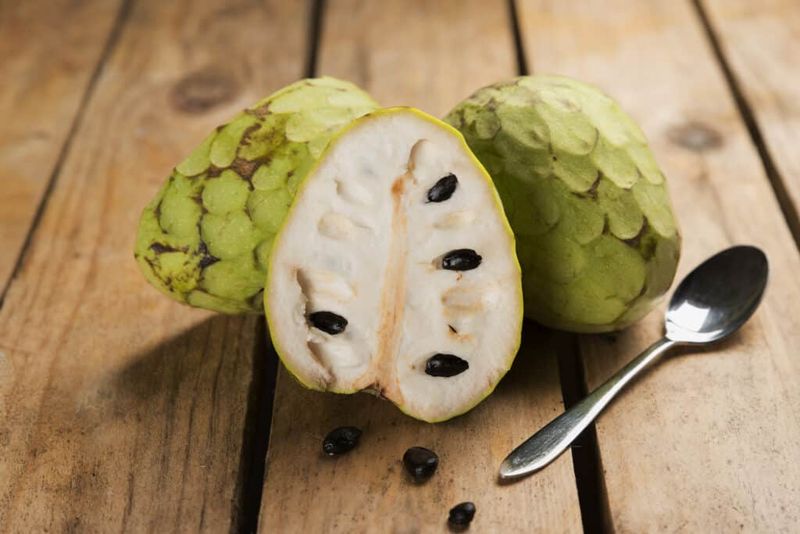
Mark Twain once called cherimoya “the most delicious fruit known to man,” and after your first taste, you might agree. This heart-shaped green fruit with scale-like skin opens to reveal creamy white flesh dotted with large black seeds.
When perfectly ripe, cherimoya’s texture resembles a natural custard – velvety smooth and almost pudding-like. The flavor defies simple description, combining elements of banana, pineapple, strawberry, and a hint of bubblegum. Native to Andean valleys, this fruit reaches its peak when it yields slightly to gentle pressure, similar to a ripe avocado.
Enjoy cherimoya at its best simply chilled and eaten with a spoon, scooping around the inedible seeds. Advanced cooks blend it into mousses or use it as a base for ice cream. For a refreshing summer treat, freeze cherimoya chunks partially and blend them into a natural sorbet without added sugar – the fruit provides all the sweetness needed.
8. Jabuticaba
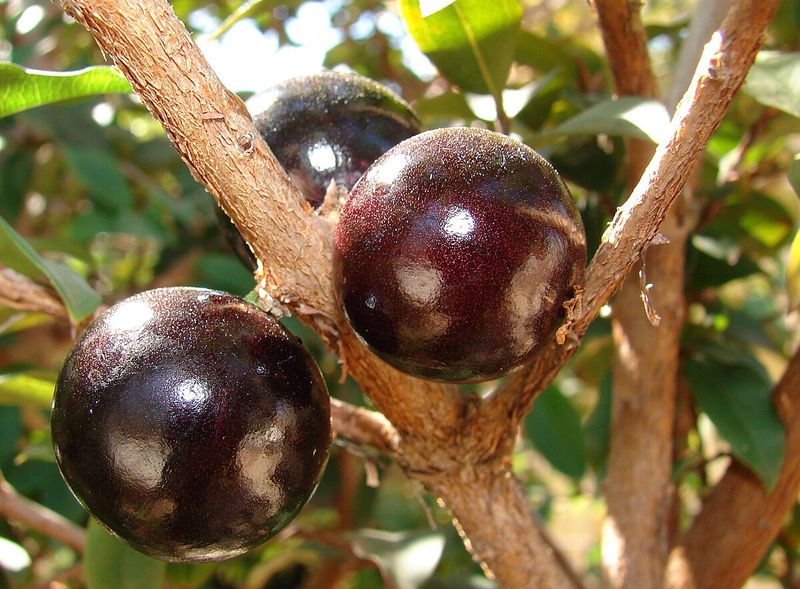
Brazil’s tree grape grows in one of the most unusual ways in the fruit world – directly on the trunk and branches rather than hanging from stems. These purple-black berries look like they’ve been glued onto the tree, creating a surreal spectacle when the tree is in full fruit.
Breaking through the thick skin reveals a translucent white pulp that’s juicy and sweet with subtle floral notes. Unlike grapes, jabuticaba has a thicker skin that adds a pleasant tannic quality similar to red wine. Fresh jabuticabas are highly perishable, lasting only 3-4 days after harvesting, which explains their rarity outside Brazil. Brazilians traditionally ferment jabuticaba into wine or liqueur to preserve their ephemeral harvest.
The berries make exceptional jams that capture their unique flavor profile. For a simple taste experience, chill the fruits before eating fresh – the contrast between the slightly astringent skin and sweet interior becomes more pronounced at cooler temperatures.
9. Feijoa (Pineapple Guava)
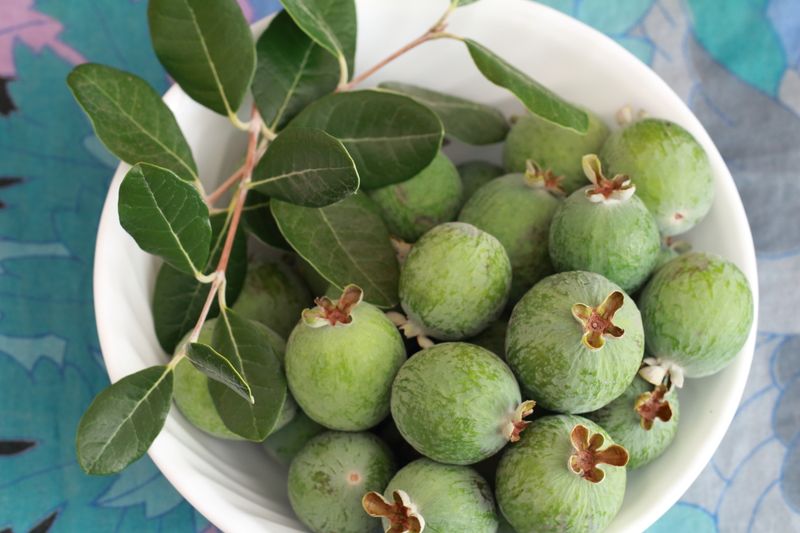
Not actually a guava at all, the feijoa is New Zealand’s aromatic gift to adventurous fruit lovers. These egg-sized green fruits have a distinctive perfume that fills the room even before cutting them open – a minty, pineapple-like scent that hints at the flavor inside.
Slicing through the thin skin reveals a cream-colored flesh surrounding a jelly center filled with tiny seeds. The taste combines pineapple’s sweetness, mint’s freshness, and apple’s crispness in varying intensities depending on ripeness. Feijoas announce their readiness to eat by falling from the tree naturally and developing a slight give when gently squeezed.
New Zealanders adore feijoas in breakfast parfaits with yogurt and honey. Their intense flavor stands up well to bold cheese pairings on charcuterie boards. For a simple introduction, scoop the flesh directly from the skin with a spoon, or try them sliced thin in a salad with arugula and feta for a sweet-savory contrast.
10. Mangosteen
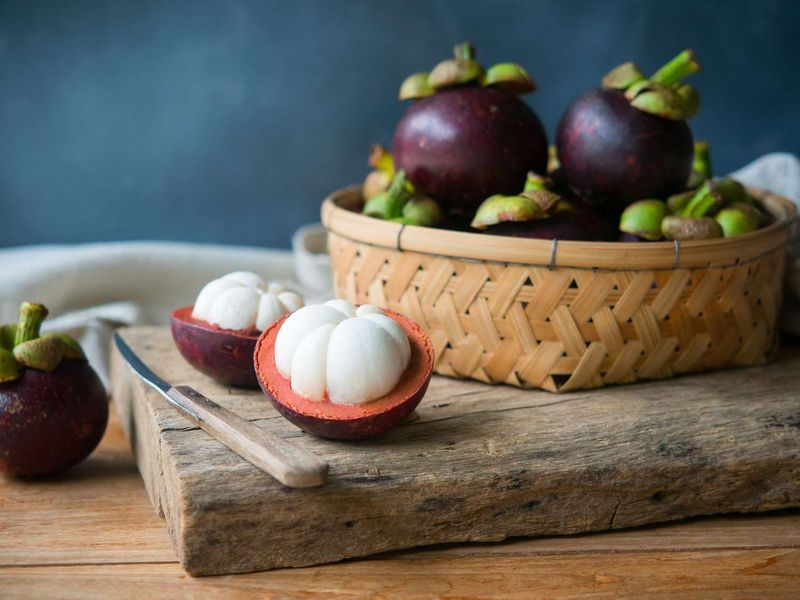
Beneath the thick purple rind of this Southeast Asian royalty lies what many consider fruit perfection. Mangosteens require patience to open – their woody exterior must be carefully broken to reveal snow-white segments arranged like garlic cloves.
The flavor defies expectations with its perfect balance of sweetness and subtle acidity. Each juicy segment delivers notes of peach, strawberry, and vanilla ice cream with a texture that’s simultaneously firm and melting. Queen Victoria reportedly offered a reward to anyone who could deliver fresh mangosteens to her palace, earning it the nickname “Queen of Fruits.”
Traditionally enjoyed fresh, mangosteens are too delicate for most cooking applications. Their juice makes exceptional sorbets and cocktail mixers. The segments pair beautifully with dark chocolate for a simple dessert. When selecting mangosteens, look for slightly soft fruits with intact stems and avoid those with hardened yellow sap on the exterior – a sign of overripeness.
11. Finger Lime
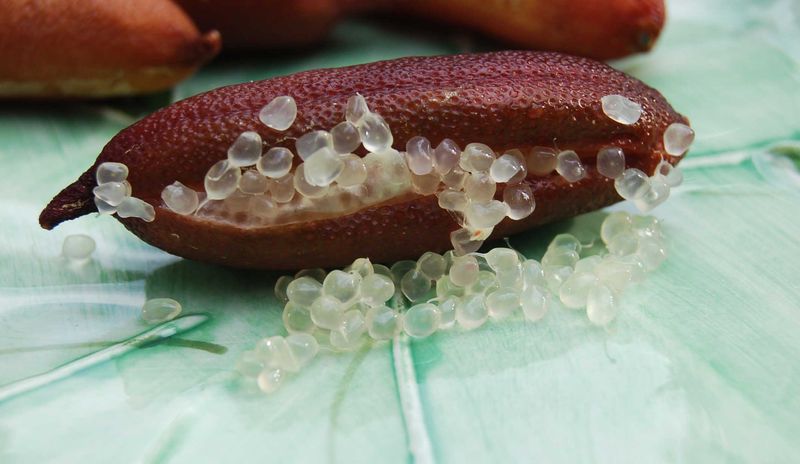
Australia’s native citrus caviar pops with tangy bursts unlike any other fruit experience. These finger-shaped fruits might look unassuming from the outside, but cutting one open reveals hundreds of juice-filled pearls that resemble lime-flavored caviar.
Each tiny bead bursts in your mouth with intense citrus flavor – sharper than regular limes but with complex floral undertones. Indigenous Australians have harvested these fruits for thousands of years from rainforest trees, but they’ve only recently captured international culinary attention. The pearls maintain their structure even when folded into other ingredients, creating textural excitement.
Top chefs prize finger limes as garnishes for seafood dishes where the pearls add flavor explosions with each bite. Home cooks can sprinkle them over avocado toast or fold them into cream cheese for an elevated bagel spread. For a show-stopping cocktail garnish, float a few pearls on top of a gin and tonic – they’ll dance among the bubbles while releasing their aromatic oils.
12. Kiwano (Horned Melon)
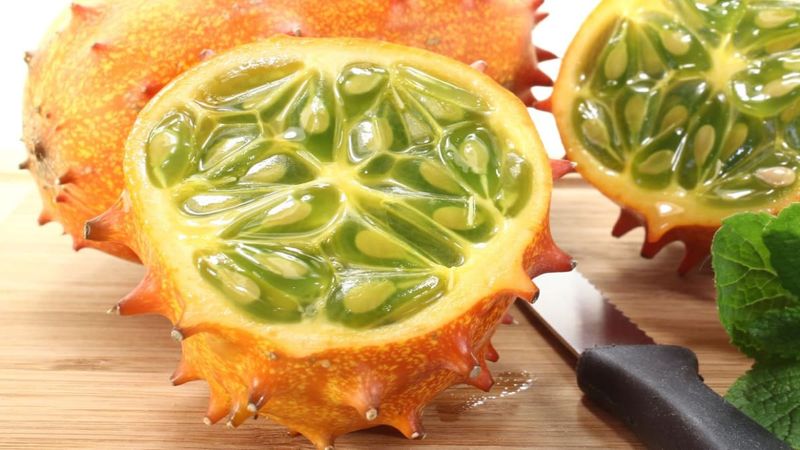
Science fiction meets fruit in this spiky, orange-skinned African native that looks like it belongs on an alien planet. Slicing through the thick, horned exterior reveals a startling lime-green gel filled with edible seeds – a visual surprise that makes it popular for garnishing platters.
Kiwano’s flavor is subtle compared to its dramatic appearance – imagine cucumber with hints of banana and lime, neither very sweet nor sour. The texture is what makes it memorable: a slippery, seed-filled gel that’s refreshing and hydrating. Originally from the Kalahari Desert, kiwanos naturally store water, allowing them to stay fresh for weeks at room temperature. African cooks add kiwano to smoothies for a nutritional boost without overpowering other flavors.
The seeds provide a pleasant crunch similar to cucumber seeds. For an easy summer appetizer, mix the pulp with chile, lime juice and salt for an exotic salsa to serve with tortilla chips. The hollowed-out shells make Instagram-worthy serving vessels for fruit salads or cocktails.
13. Langsat (or Lanzones)
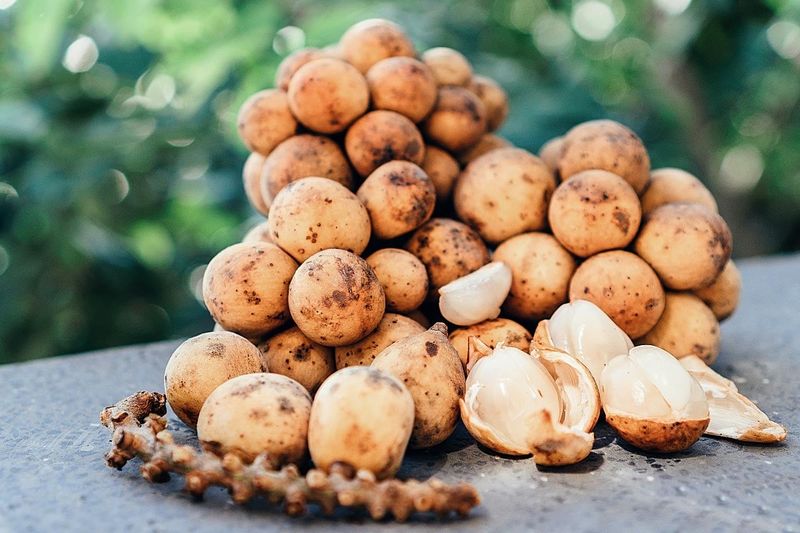
Clusters of these small, round fruits hang like grapes from their native trees throughout Southeast Asia, where they’re a seasonal celebration. Beneath the thin, leathery tan skin hides translucent segments that separate easily, much like mandarin oranges.
Langsat’s flavor profile bridges the gap between sweet and sour with a delicate balance that’s instantly refreshing. The juicy segments deliver notes of grape and grapefruit with a subtle floral finish that lingers pleasantly. Occasionally, you might encounter a bitter seed – an unexpected contrast to the sweet flesh that Southeast Asians consider part of the langsat experience.
Markets in Thailand, Malaysia, and the Philippines overflow with langsat during their brief season, where they’re typically enjoyed fresh. Their gentle acidity makes them excellent candidates for homemade syrups that capture their unique flavor. When selecting langsats, look for fruits with intact stems and avoid those with brownish spots – the perfect ones have a slight give when gently squeezed.
14. Santol (Cotton Fruit)
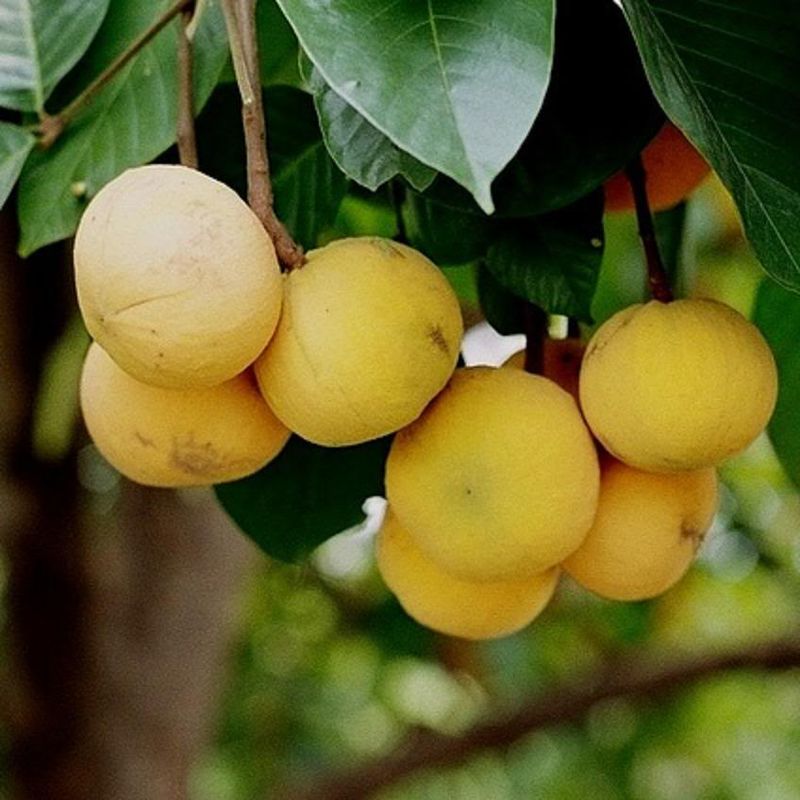
Behind the unassuming appearance of this golf ball-sized fruit lies a textural marvel that’s captured Filipino hearts for centuries. Santol’s pale yellow to reddish-brown exterior hides two distinct edible parts: a crisp outer layer and cottony inner segments surrounding inedible seeds.
The flavor walks a tightrope between sweet and sour, with the outer flesh being milder and the inner cotton having a more intense, slightly acidic character. Filipinos often enjoy santol with a pinch of salt or dipped in soy sauce with chili – the savory additions highlighting its natural complexity. Unlike many tropical fruits, santol has a refreshing quality rather than overwhelming sweetness.
Traditional Filipino cooking transforms santol into sinigang, a sour soup where the fruit’s acidity replaces tamarind. The cotton-like segments can be candied with sugar to create a chewy, translucent preserve called santol candy. For first-timers, try squeezing lime juice over fresh santol segments – the added acidity brings out its natural sweetness in an unexpectedly delightful way.
Leave a comment